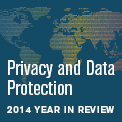2014 was a busy year for the Federal Trade Commission (FTC) with the Children’s Online Privacy Protection Act (COPPA). The FTC announced something new under COPPA nearly every month, including:
- In January, the FTC issued an updated version of the free consumer guide, “Net Cetera: Chatting with Kids About Being Online.” Updates to the guide include advice on mobile apps, using public WiFi securely, and how to recognize text message spam, as well as details about recent changes to COPPA.
- In February, the FTC approved the kidSAFE Safe Harbor Program. The kidSAFE certification and seal of approval program helps children-friendly digital services comply with COPPA. To qualify for a kidSAFE seal, digital operators must build safety protections and controls into any interactive community features; post rules and educational information about online safety; have procedures for handling safety issues and complaints; give parents basic safety controls over their child’s activities; and ensure all content, advertising and marketing is age-appropriate.
- In March, the FTC filed an amicus brief in the 9th U.S. Circuit Court of Appeals, arguing that the ruling of U.S. District Court for the Northern District of California in Batman v. Facebook that COPPA preempts state law protections for the online activities of teenagers children outside of COPPA’ coverage is “patently wrong.”
- In April, the FTC updated its “Complying with COPPA: Frequently Asked Questions” (aka the COPPA FAQs) to address how COPPA applies in the school setting. In FAQ M.2, the FTC discussed whether a school can provide the COPPA-required consent on behalf of parents, stating that “Where a school has contracted with an operator to collect personal information from students for the use and benefit of the school, and for no other commercial purpose, the operator is not required to obtain consent directly from parents, and can presume that the school’s authorization for the collection of students’ personal information is based upon the school having obtained the parents’ consent.” But, the FTC also recommends as “best practice” that schools provide parents with information about the operators to which it has consented on behalf of the parents. The FTC requires that the school investigate the collection, use, sharing, retention, security and disposal practices with respect to personal information collected from its students.
- In July, COPPA FAQ H.5, FAQ H.10, and FAQ H.16 about parental consent verification also were updated. In FAQ H.5, the FTC indicates that “collecting a 16-digit credit or debit card number alone” is not sufficient as a parental consent mechanism, in some circumstances, “collection of the card number – in conjunction with implementing other safeguards – would suffice.” Revised FAQ H.10 indicates that a developer of a child-directed app may use a third party for parental verification “as long as [developers] ensure that COPPA requirements are being met,” including the requirement to “provide parents with a direct notice outlining [the developer’s] information collection practices before the parent provides his or her consent.” In revised FAQ H.16, the FTC [...]
Continue Reading
read more

 Subscribe
Subscribe


